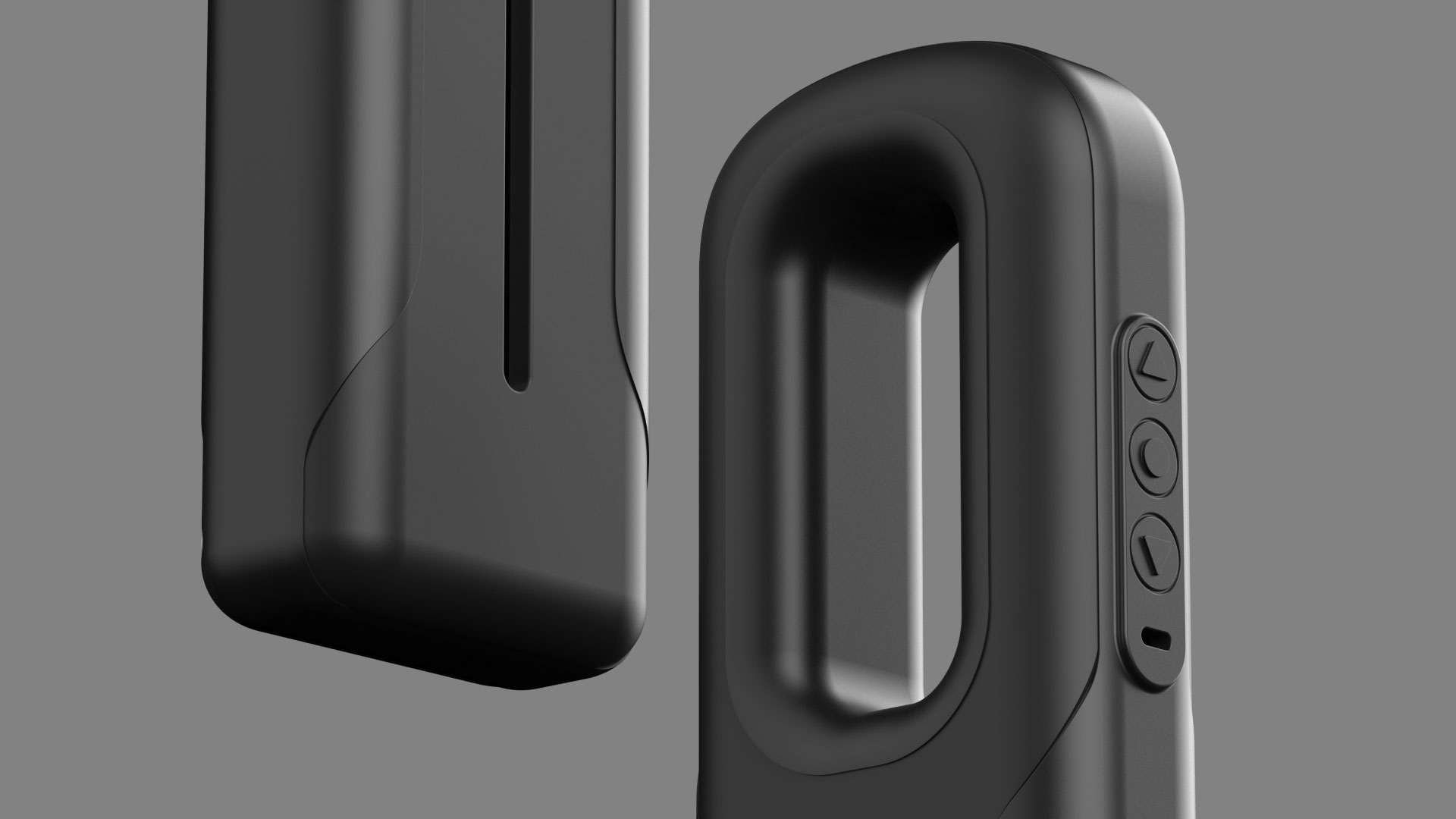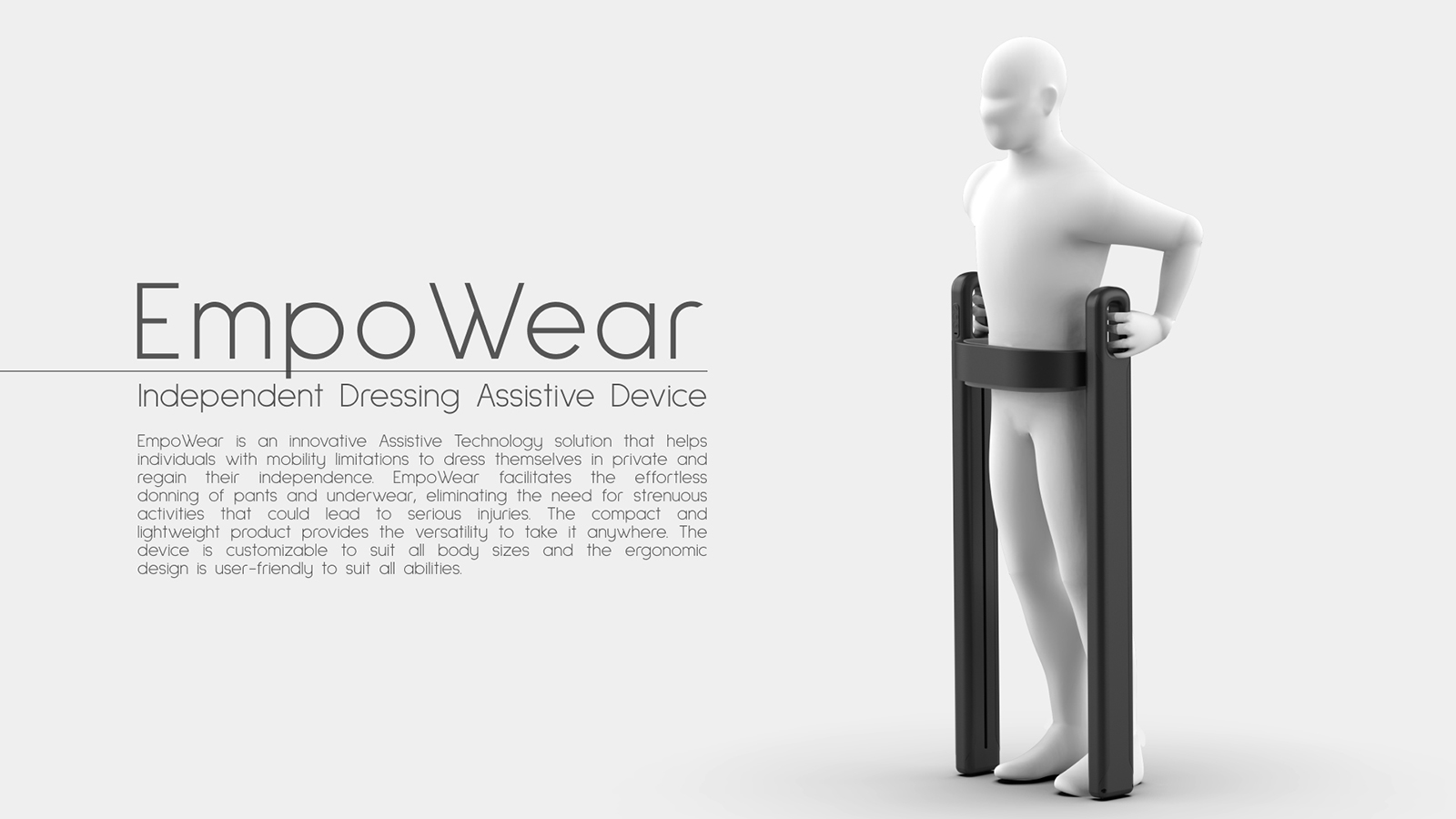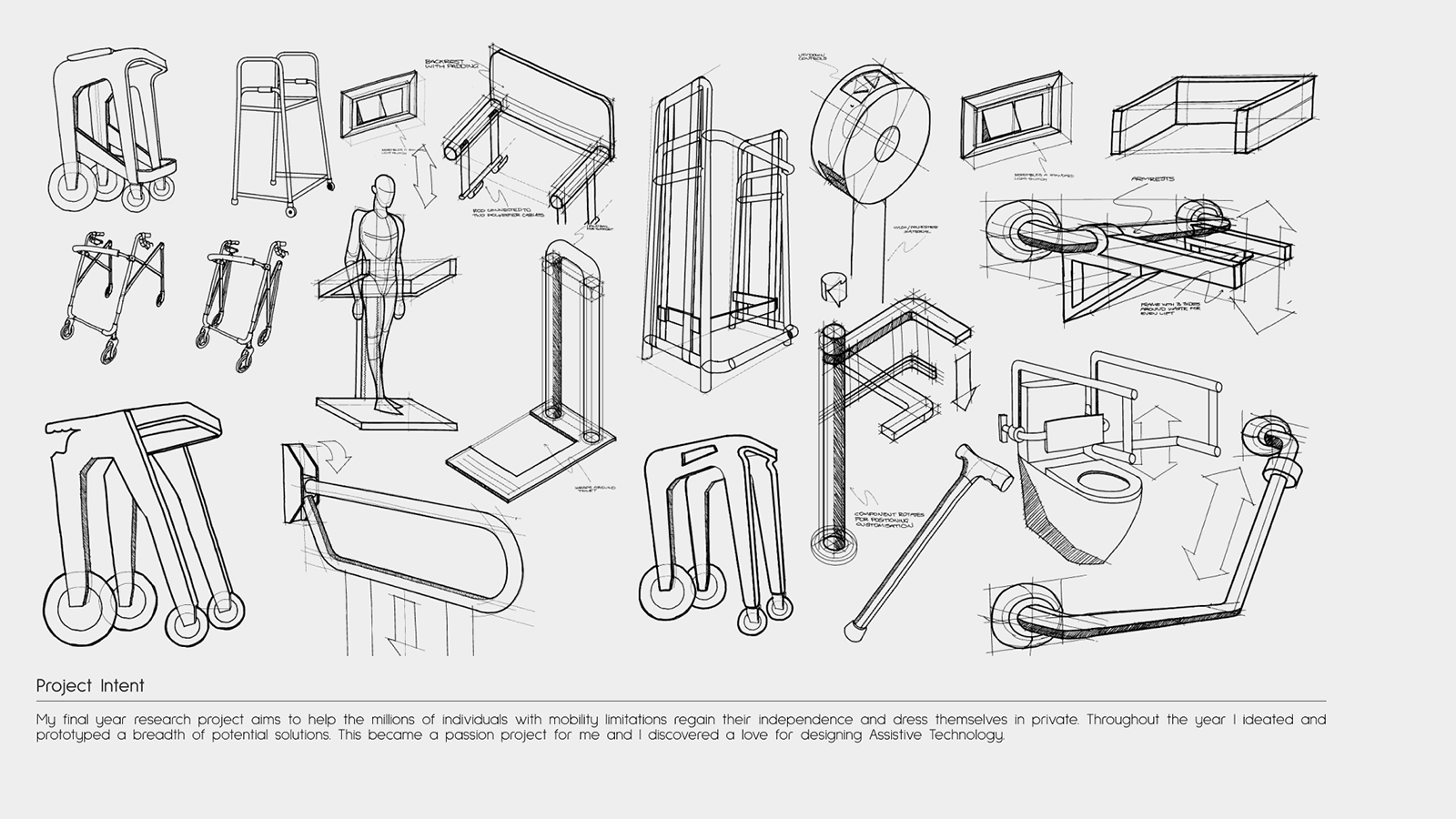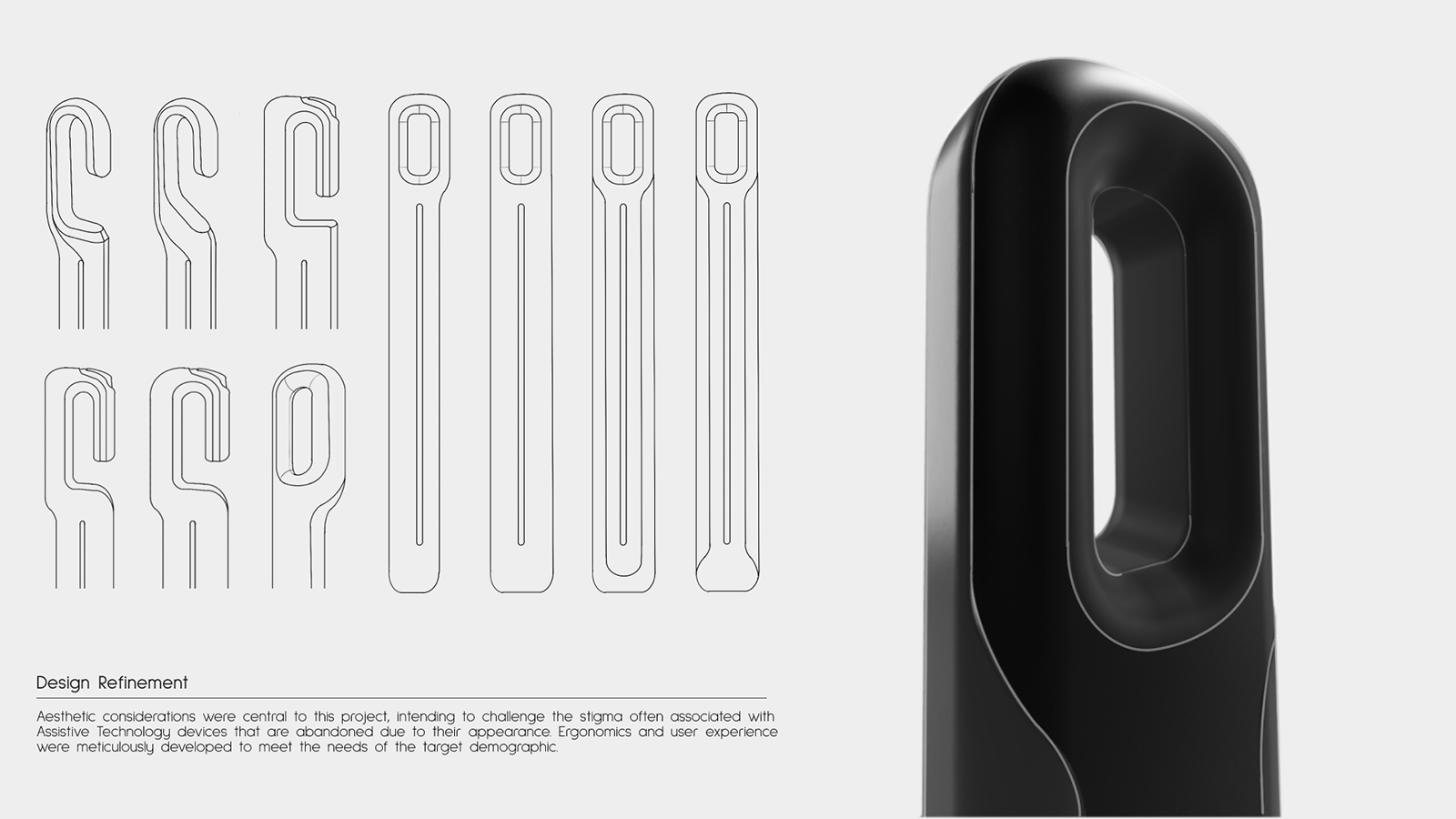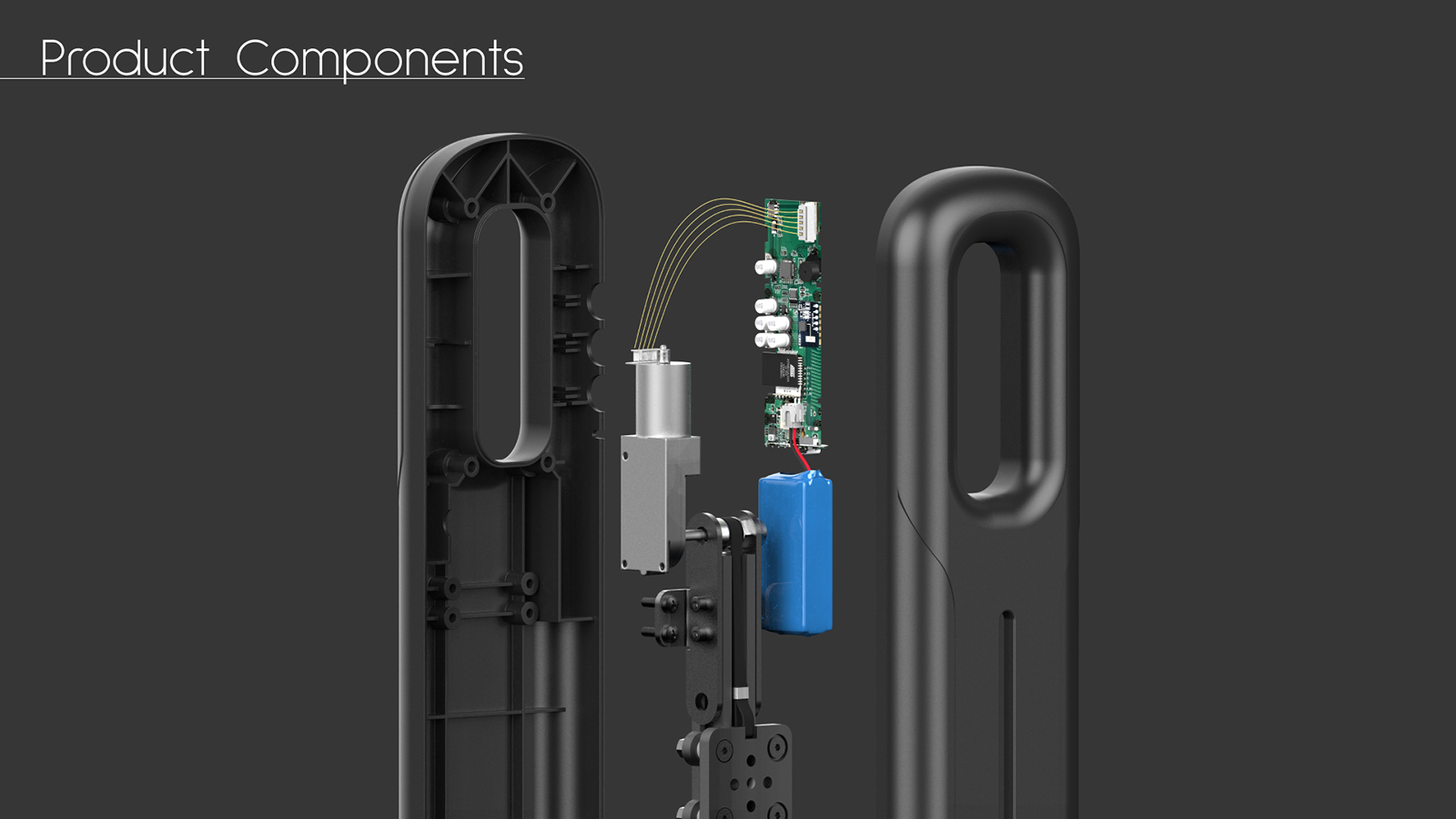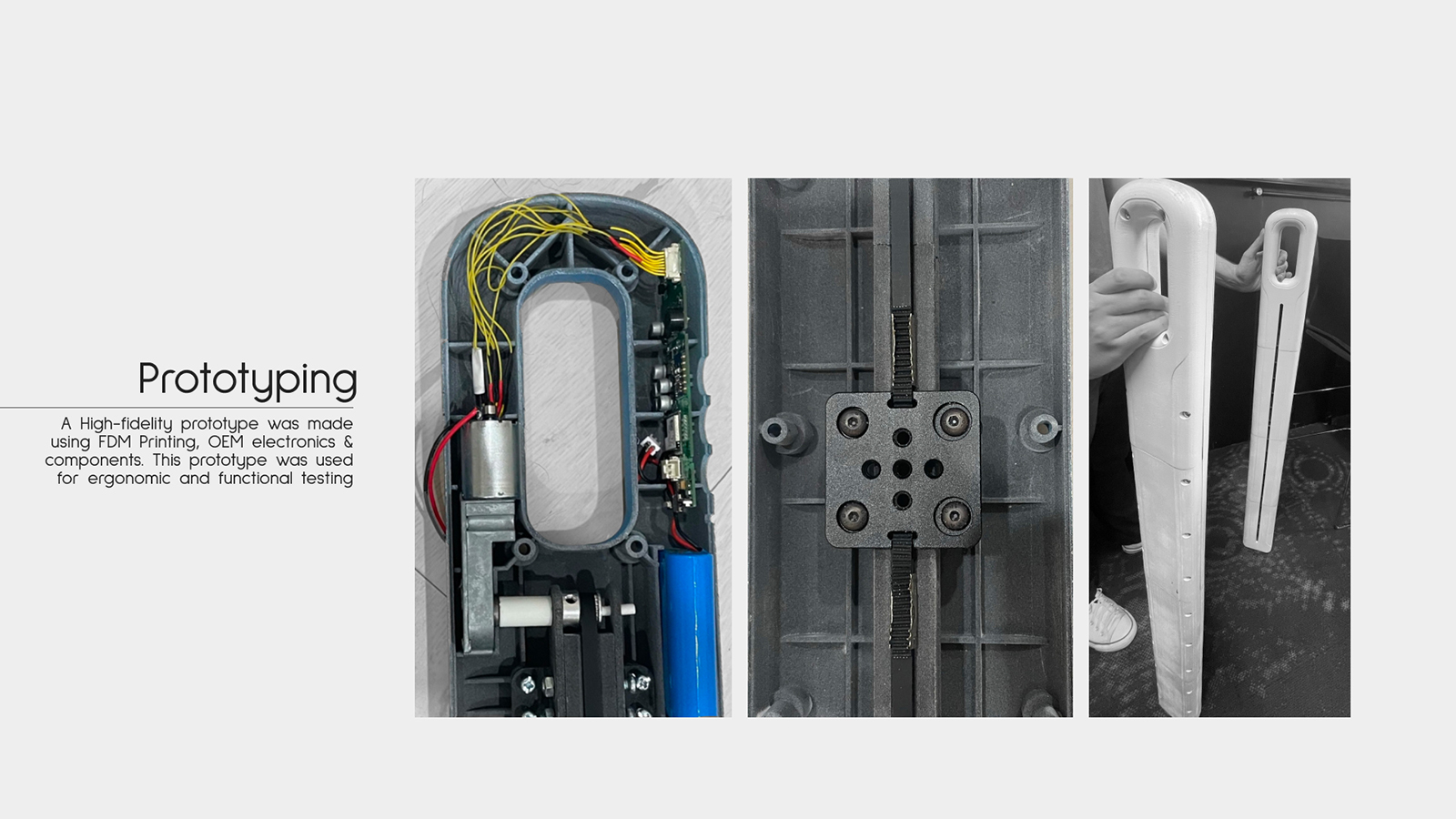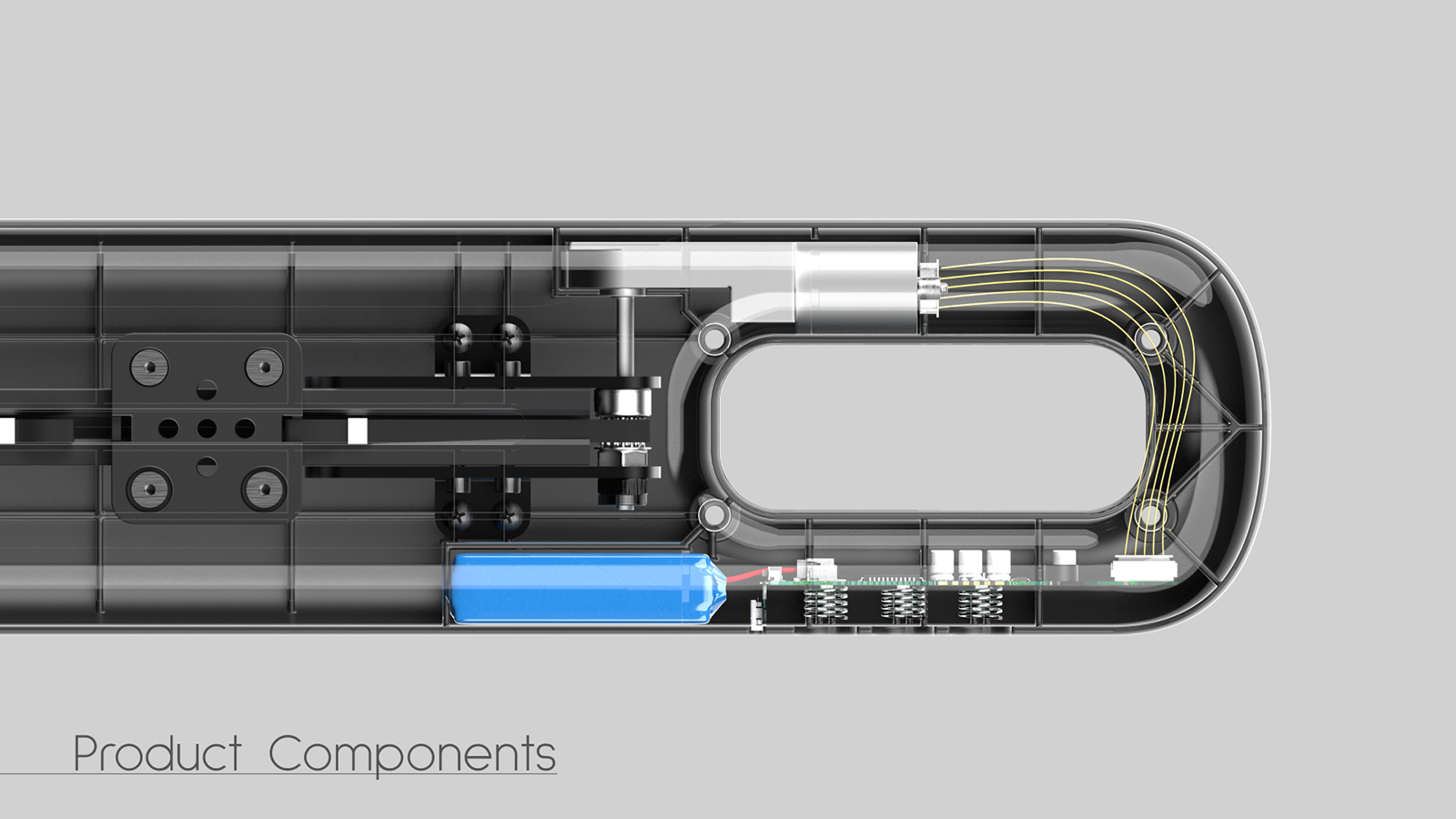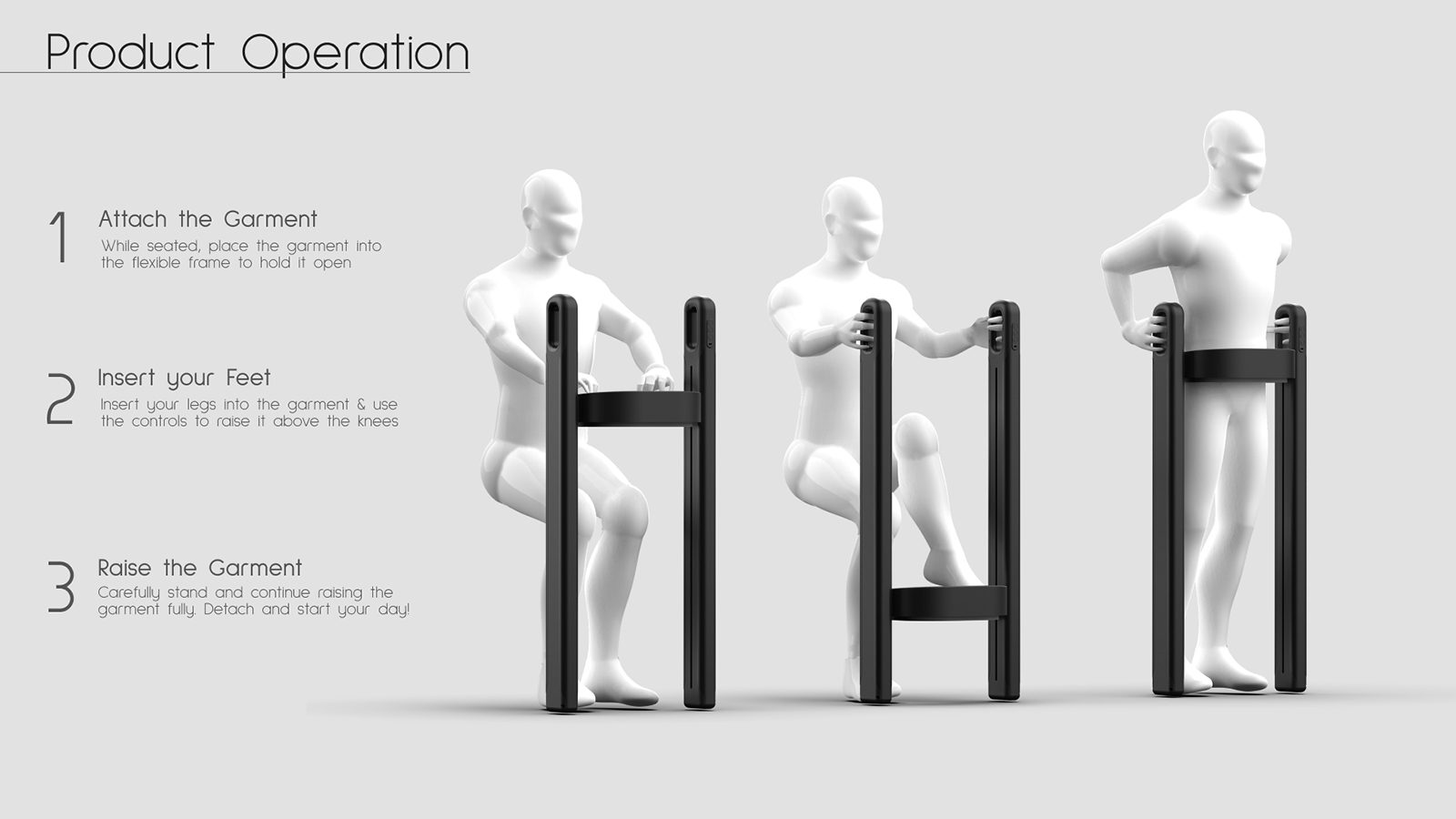The Empowear design process began through direct engagement with users, including a person with cerebral palsy who relied on carers to pull up their pants, and elderly family members who expressed fear of losing dressing independence and privacy. These personal insights, alongside extensive literature review and market research, highlighted the critical need for assistive devices that not only function effectively but also avoid the stigma of unattractive, medical-looking aids that users often abandon.
Applying the Double Diamond design framework, the project progressed through divergent ideation and convergent refinement, supported by over six major prototype iterations and many smaller refinements. Prototyping combined physical modeling on mannequins and my own body, alongside CAD, 3D printing, cardboard mock-ups, and electronics integration.
Multiple attachment methods for clothing, such as magnets and Velcro, were trialed to accommodate different fabrics. Ergonomic principles and regulatory considerations, like public bathroom handrail standards, informed design decisions to enhance accessibility and usability. Portability and adaptability were prioritized by designing for walker-frame mounting and customizable sizing.
While the final functional prototype successfully demonstrated Empowear’s core concept and user benefits, ongoing development will focus on refining the clothing attachment mechanism to accommodate flexible fabric materials more reliably. This iterative approach ensures the design remains responsive to real user needs and manufacturing feasibility.

